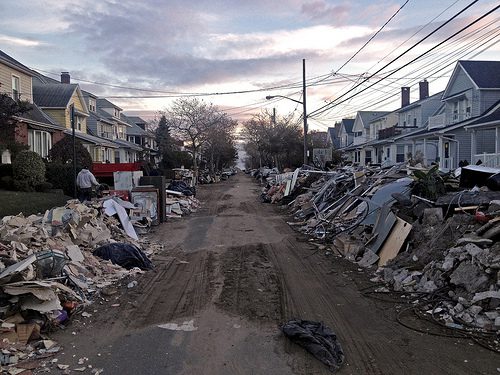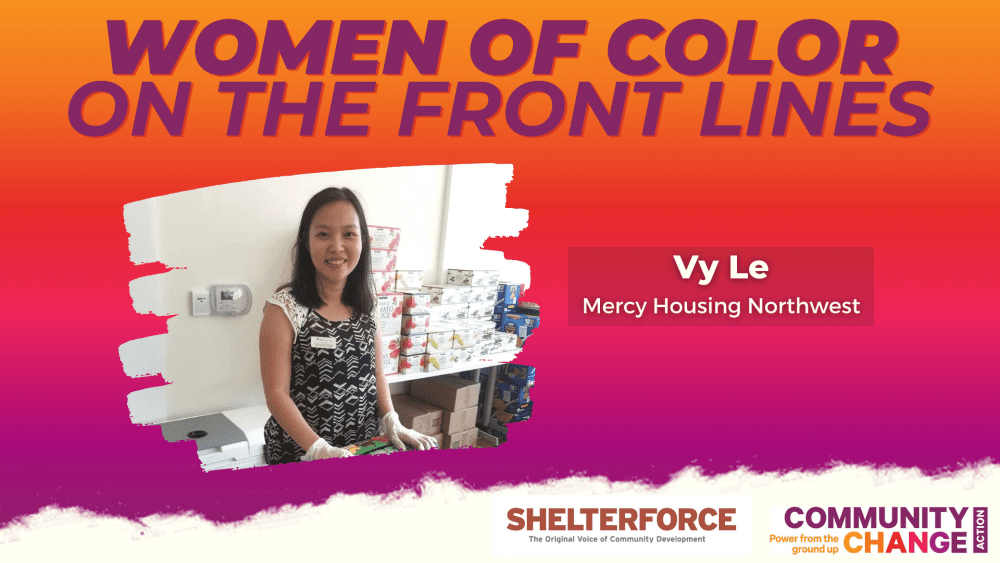All around America, we've watched the devastation of Hurricane Sandy with a sense of shock and heartbreak. For millions of people who suffered from the storm, some of the hardest questions seem to be about the simplest things. When will the power be back? How do I get to work? When will I be able to send my kids to school?
Rebuilding for the future may still be far from their minds. But for America as a whole, it can't be.
While we help victims of Sandy get back on their feet every way we can, we also have an obligation to make sure that reconstruction efforts provide real solutions for the future — rather than compounding the tragedy.
From Katrina and Isaac to Irene to Sandy, severe weather events are becoming a constant feature of our lives. And they're leaving in their wake too many lessons of the wrong way to rebuild. It even has a name: disaster capitalism. Naomi Klein in The Shock Doctrine and many other journalists have documented how developers and their political allies have used disasters like Katrina as a chance to funnel billions in public dollars into private pockets, to push conservative economic agendas, and to leave low-income people stranded — literally locked out of reconstruction jobs in the communities they once called home.
We can't let the same happen in Sandy's wake.
Right now, New York Governor Andrew Cuomo is calling for multi-billion-dollar infrastructure projects to protect New York from hurricane flooding in the future. New Jersey Governor Chris Christie — previously no friend of infrastructure investment — is pledging that every corner of New Jersey will be rebuilt.
The question is how to rebuild in a way that not only makes Sandy's victims whole, but provides jobs and opportunity for those who need it most, makes our communities stronger and more secure than they were before the storm, and begins to address the disaster of climate change that's fueling the storms.
Many of the answers are already in our hands.
The first is to make sure that rebuilding is shaped not by the greed for profits, but by the voice of communities. The Transportation Equity Network (TEN) and Gamaliel have for years been leading community organizing campaigns to win vital infrastructure investments for the public good, rather than private profit.
A careful study showed that over the last five years, TEN and Gamaliel organizing have delivered 594,000 jobs through transit and infrastructure victories. And while construction jobs of all kinds too often exclude women, low-income people, and people of color, TEN has created a proven model for expanding job access and career growth for these groups: the Missouri Model. It should become the standard for major infrastructure investments everywhere.
The opportunities to rebuild the right way are all over America. The Obama administration is forcing cities such as St. Louis, Pittsburgh, and Nashville to rebuild their polluting sewer systems. These cities alone will spend $6 billion in public funds to do so, creating tens of thousands of public sector jobs.
Community organizing can make sure those public dollars are well spent. After meeting with Gamaliel affiliate Metropolitan Congregations United, the Executive Director of the St. Louis Metropolitan Sewer District and all major construction unions agreed in October to apply the Missouri Model to diversify hiring for their $4.4 billion dollar, 20-year wastewater project — the largest in the country. They also committed to a community accountability process, which TEN will use to focus the project to green solutions like the use of rain barrels, permeable pavement, landscaping, green roofs, rainwater diversion, and environmental justice.
We can do the same nationwide. And private investment, properly guided, can be part of the solution. That's why TEN is developing a model of Public-Private Community Partnerships, in collaboration with labor and industry, to be able to leverage private finance for infrastructure investment without violating bottom-line standards for environmental justice, civil rights, and community accountability.
Over the next three years, through our Fire of Faith campaign, TEN and Gamaliel will be working to help America rebuild the right way. We invite you to join us.
This post originally appeared on the Huffington Post on 11/1/12.
CC image of The Rockaways after Hurricane Sandy by Flickr user ma neeks.





Good post….